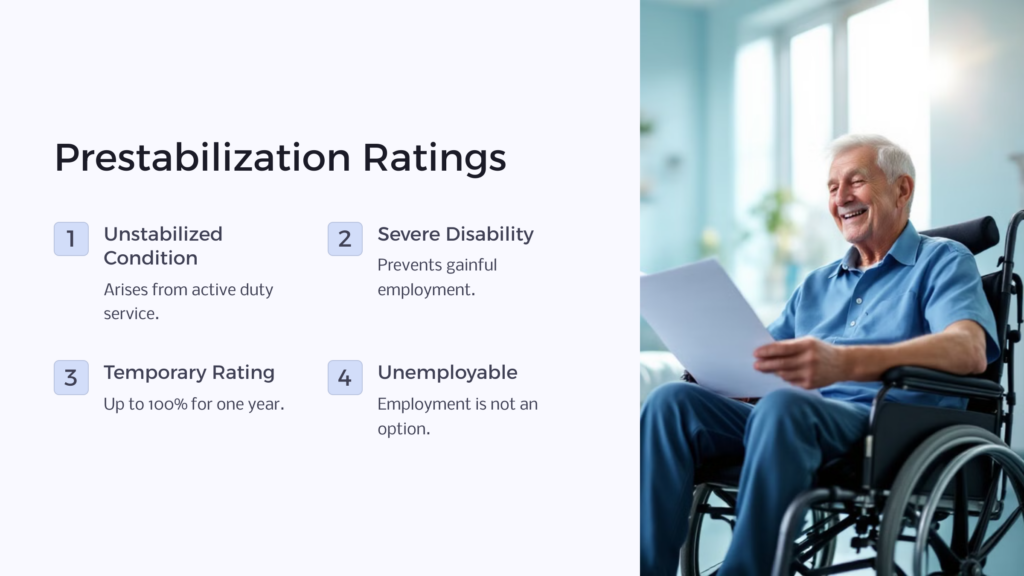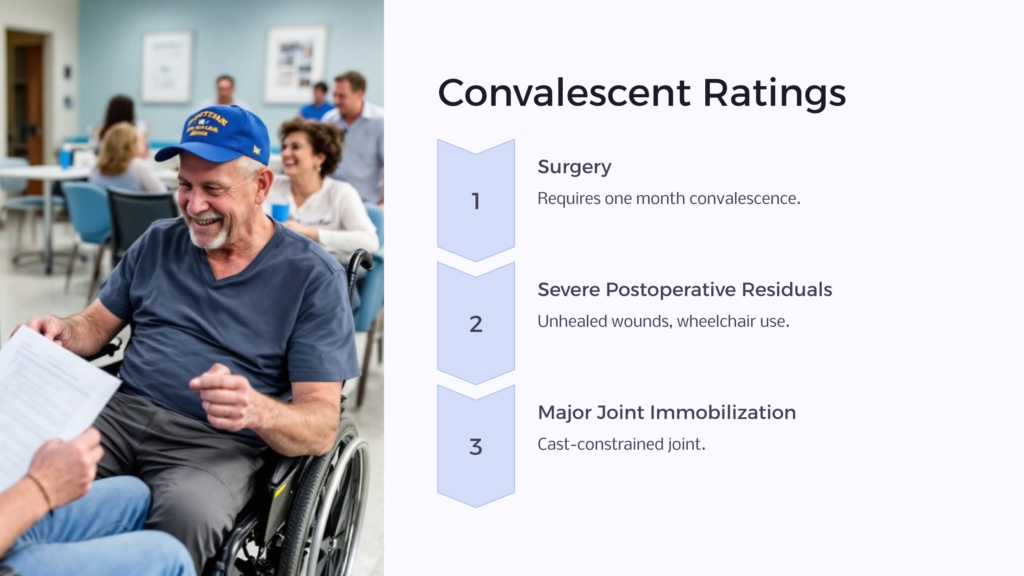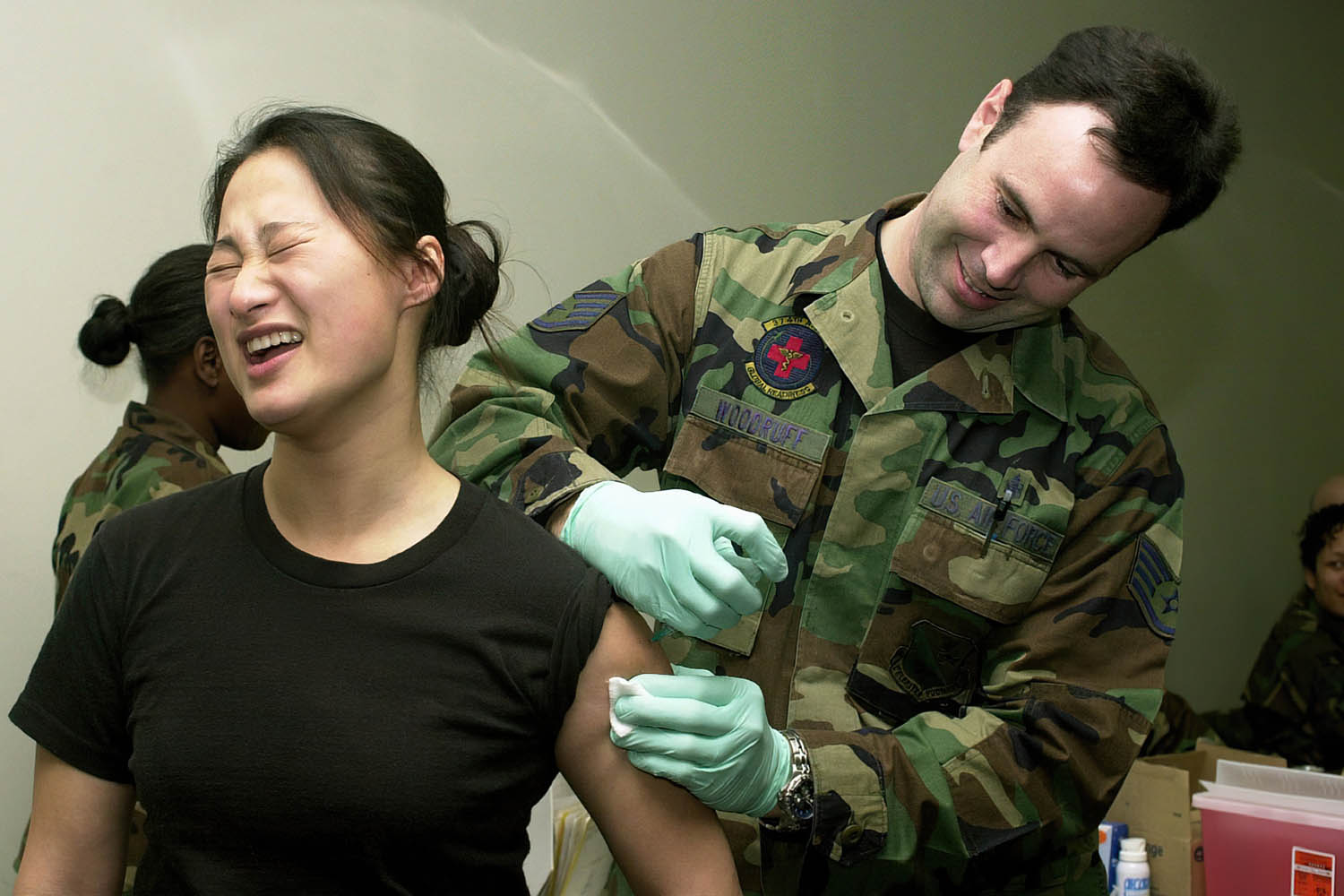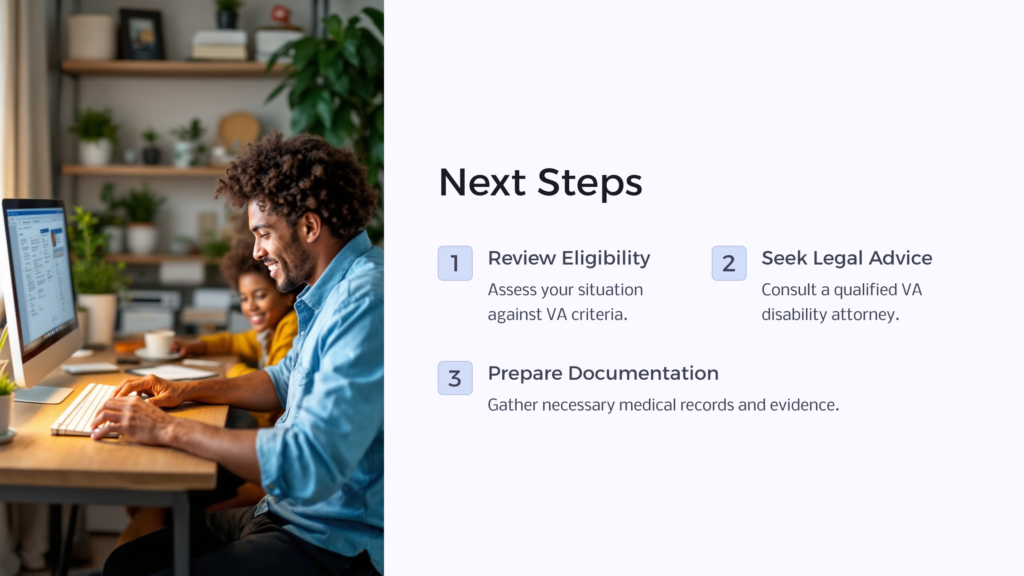For U.S. veterans who suffer from a permanent service-related health condition or injury that prevents them from working, disability benefits through the U.S. Department of Veterans Affairs can represent a permanent replacement for lost income. But that isn’t the only disability-related benefit the VA offers. In addition to this disability benefit, the VA also can assign a temporary disability rating to a veteran to help cover lost income related to temporary service-related injuries or medical conditions.
3 Types of Temporary Total Disability Ratings
- Prestabilization Ratings
- Hospitalization Ratings
- Convalescent Ratings
Many times, U.S. veterans may suffer injuries or other service-related medical conditions that, after their military discharge, still render them temporarily unable to earn a living. In other words, their conditions may not have fully stabilized. Though many veterans ultimately recover over time, VA temporary total disability ratings allow them to compensate for the income they are unable to earn through a substantially gainful occupation. This disability compensation entails their being rated at 100 percent disabled, but only for a limited period of time. If you think you might qualify for a temporary total rating, we’ve outlined everything you need to know. You may also consider reaching out to a qualified VA disability attorney, who can review your VA claim and advise as to your best next steps.
There are three major types of temporary total disability ratings, as seen below:
1. Prestabilization Ratings

The VA recognizes that, while you may heal fully over time, your medical condition may remain unstable after your military discharge. In that case, if you meet any of the following criteria, you may be eligible for up to a 100% rating through the VA:
- You suffer from an unstabilized condition
- This condition or injury manifested during your active duty service time
- The condition resulted in severe disability
- Because of the condition, gainful employment is not an option for you
Veterans in these situations are generally considered by the VA as having the highest immediate need and the least likely to be able to engage in gainful employment. For example, if you suffered a gunshot wound or were involved in a vehicle accident during your time of active duty service and still suffer from residual effects, you may be eligible for a VA prestabilization rating.
In general, prestabilization ratings are meant to cover loss of income for the time immediately following your military discharge, up to one year. If, however, you are assigned a permanent disability rating for your condition and resulting individual unemployability, that will negate your prestabilization rating. As part of the typical process, the VA will assess your condition at six and 12 months after your discharge to determine whether to adjust your VA rating to a permanent disability rating. Prestablizaton ratings are assigned at 50% and 100% rating levels.
2. Hospitalization Ratings
If an eligible veteran must be hospitalized for more than 21 days because of a disability related to military service, the VA may assign a 100% disability rating on a temporary basis. Even if a hospitalization is related to a non-service connected condition, you can still receive a 100% temporary disability rating if during that same hospitalization you also were treated for a service connected condition for at least 21 days. The effective date of coverage is the first day of your hospitalization, and coverage remains active through the last day of the month in which you are discharged. Eligible hospital stays can be either for treatment or observation.
It’s important to note that in order to be eligible for a hospitalization disability rating, you must be treated in a VA medical center or VA-approved medical facility.
3. Convalescent Ratings

Convalescence is the simple act of healing and returning to normal physical abilities after an illness, operation, or injury. If a lengthy convalescent period after a hospital discharge renders you unable to work, you can still be eligible for a 100% temporary disability rating, which will provide compensation for lost income during this time. You simply have to meet one or more of the following criteria:
- You must have undergone a surgery that requires at least one month of convalescence
- You must have undergone a surgery that results in severe postoperative residuals, such as surgical wounds that haven’t healed and continued use of a wheelchair or crutches
- You must have at least one major joint that is constrained or immobilized by a cast
As with hospitalization ratings, the surgery or medical procedure leading to your convalescence must have taken place in a VA medical center or VA-approved medical facility. To attain this temporary disability rating, you’ll need to provide medical evidence that your convalescence is required by your doctor. Typically, a simple letter from your physician stating that you’re unable to return to work will suffice. Your doctor simply needs to outline why the convalescence is necessary, along with its recommended length of time.
A temporary convalescent rating becomes effective on the first day of hospital or outpatient treatment and will remain active for one to three months after the first day of the month in which you are discharged or released. If you can show documentation that you need additional convalescent time, the VA also can approve extensions that allow your disability rating to remain active for a full six months to one year after your hospital release.
What Are Staged Ratings?
 The VA may assign a staged series of ratings for the same medical condition. These are ratings that change over time, depending on the fluctuating severity of your medical condition. Temporary total disability ratings represent one type of staged rating. Many times, a VA disability claim can take multiple years before being fully resolved, so the VA will regularly assess your condition to determine if the VA disability rating under consideration needs to be updated.
The VA may assign a staged series of ratings for the same medical condition. These are ratings that change over time, depending on the fluctuating severity of your medical condition. Temporary total disability ratings represent one type of staged rating. Many times, a VA disability claim can take multiple years before being fully resolved, so the VA will regularly assess your condition to determine if the VA disability rating under consideration needs to be updated.

There are three typical types of staged ratings that the VA may use – we’ve outlined them below.
Staged ratings tied to condition severity
If your condition either gets worse or improves after you file your initial claim, the VA may choose to change your disability rating throughout the process. For example, if you apply for a 10% disability rating for a condition that then worsens over a two-year period, the VA may update your rating to 25%.
Temporary total evaluations
In this case, the VA will assign a temporary rating if you undergo hospitalization. Such ratings are generally good for three months after hospital release. The VA then will re-examine the case and assign a new VA rating based on the change in your condition. If the VA can’t get a good enough sense of your condition from the medical evidence contained in your records, it may require that you come into a VA medical facility for an examination.
Prestabilization ratings
These ratings apply to veterans who separate from military service with a debilitating medical condition. The goal is to provide compensation for these newly separate servicemembers for the loss of work they may experience because of their service connected disability.
How Do I File an Appeal?
It’s important to remember that many VA disability claims are rejected upon first review, so if you receive notice that your VA claim has been denied, don’t lose heart. However, you do need to act quickly. There is a prescribed set of steps you’ll need to follow in order to appeal your ruling. If you haven’t yet partnered with a qualified disability lawyer, this would be a great time to reach out to someone you trust. A VA disability attorney can help you organize all the appropriate documentation you’ll need to file your appeal. With intimate knowledge of the VA disability appeal process, your lawyer can make sure you’re well prepared for every step of the way.
The first thing you’ll need to do upon learning that your disability claim has been denied is file an official Notice of Disagreement. You have one year to file this notice if you want to appeal. You can do this either by writing your own original letter or by filling out the VA’s Statement in Support of Claim Form, which is available online. In either case, you can submit your Notice of Disagreement to your regional VA office – the same office that originally reviewed your claim.
At this point, you have the choice of either requesting that a Decision Review Officer from your regional office review your claim and schedule a subsequent hearing – or you can request that your claim be reviewed by the Board of Veteran Appeals. Most experts will recommend going with a DRO review at this point – you can always appeal to the BVA later in the process if you’re unhappy with your DRO decision. Insisting that your regional office take a look at your claim from a fresh perspective certainly can’t hurt your case, plus it very well may help it.
Once your DRO review is complete, you’ll receive a comprehensive Statement of the Case, which will outline the DRO’s decision regarding your claim. If you’re happy with the decision, the process stops here. But if you need to continue your appeal, your next step is to complete and submit the Substantive Appeal Form that should have been included with your Statement of the Case. At this point, you have either one year file your Substantive Appeal Form – whichever gives you the most time.
After your appeal form has been received, you then have 90 days to gather any additional documentation, medical evidence, and other supporting information the BVA should consider as part of your appeal. You’ll then likely have a hearing – either in person with the BVA or by teleconference in some cases. During this hearing, the BVA has the chance to hear directly from you about the extent of your condition and its effect on your daily living, including the ability to secure a substantially gainful occupation. Once the hearing is complete, you must wait for the BVA to make its decision and notify you by mail.
Temporary Total Disability Ratings
Not only will the VA provide permanent VA disability benefits for those who qualify, but it also will provide temporary total disability ratings to veterans who need short-term replacement of income due to a service-related injury or medical condition that has yet to stabilize. This temporary VA rating is equivalent to a 100% disability rating for a permanent disability, which can be profoundly helpful to veterans who suffer a loss of income related to their medical situation.
If you think you may qualify, make sure to reach out to a trusted and qualified disability lawyer, along with reviewing all the steps and criteria here to evaluate the strength of your case.

 Benefits.com Advisors
Benefits.com Advisors
With expertise spanning local, state, and federal benefit programs, our team is dedicated to guiding individuals towards the perfect program tailored to their unique circumstances.
Rise to the top with Peak Benefits!
Join our Peak Benefits Newsletter for the latest news, resources, and offers on all things government benefits.


















